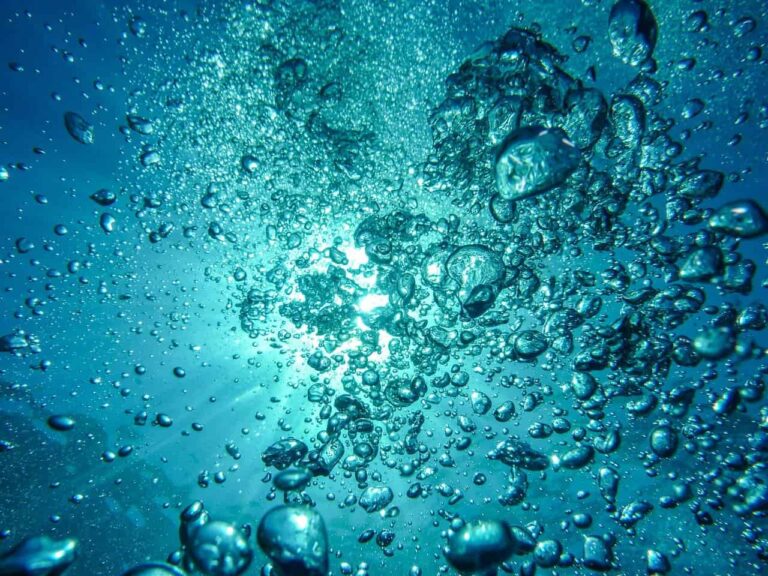People frequently disregard and underestimate water, an indispensable resource that maintains life on our planet. The notion of the water footprint serves as a valuable instrument in comprehending the concealed expenses linked to water usage by quantifying the volume of water employed in the creation of goods and services.
This metric encompasses both direct and indirect water utilization alongside the ecological repercussions stemming from such activities.
By gaining insight into the water footprint associated with our patterns of consumption, we can make well-informed decisions. This decision can foster sustainability, thereby contributing to the safeguarding and preservation of water reservoirs.
Delving into the depths of this discourse, this editorial endeavors to elucidate this concept. This elucidates its intrinsic significance in advancing practices conducive to responsible water management.
Table of Contents
What is water footprint, and why is it important
A water footprint is a metric that quantifies the total amount of water used in the production of goods and services. Therefore, it encompasses both direct and indirect water usage.
Direct water use refers to the water consumed during manufacturing or production processes. Such as irrigation for crops or water utilized in industrial operations. Indirect water use refers to the water required to produce the inputs used in the production process, like the water used to grow feed for livestock or the water utilized in generating electricity.
The concept of a water footprint holds significance as it enables us to comprehend the environmental consequences of our consumption patterns. For instance, it is associated with beef production is considerably higher than that of vegetable production. This is because raising livestock necessitates much more water compared to cultivating vegetables to yield the same weight
Understanding our footprint can empower us to make more sustainable choices. By selecting products with lower water footprints, we can diminish our environmental impact and conserve this invaluable resource for the well-being of future generations.
Read more: Water conservation in agriculture: how to limit waste in one of the most water- consuming sectors
Why is it so essential?
The concept of the water footprint is significant as it allows us to gain a comprehensive understanding of the water uses. This is specifically in the production process of various goods and services. It goes beyond the direct water consumption by taking into account the indirect water usage embedded in the entire supply chain.
The water footprint provides a valuable tool for identifying activities and products that consume large amounts of water and contribute to water scarcity and pollution. By measuring it, we can pinpoint areas where water-intensive processes are taking place. Moreover, we can recognize the potential for improvements in water efficiency;
Various sectors, including agriculture, industry, and households, can benefit from understanding their water footprint. By analyzing the water consumption patterns and identifying areas for reduction, we can strive to minimize the demand for water and alleviate the adverse effects on the environment.
Sustainable water management and governance greatly benefit from the use of water footprint assessment. Policymakers and stakeholders can utilize this information to make informed decisions regarding water allocation, pricing, and regulation.
With a comprehensive understanding of water usage and its impacts, effective strategies can be developed. It will help to promote responsible water practices and safeguard water resources for future generations.
What are the different types of water footprints
There are three types of water footprints that are commonly used to measure the water use associated with a product, process, or activity. These include:
- Blue Water Footprint: The blue water footprint represents the volume of surface and groundwater consumed for various purposes such as irrigation, industrial processes, and domestic use. It is a measurable and observable form of water usage. It can have significant implications for water availability and quality in river basins and underground water sources. Typically, people quantify the blue water footprint in cubic meters (m3) and commonly utilize it to evaluate water use efficiency in agricultural and industrial systems.
- Green Water Footprint: The green water footprint pertains to the amount of rainwater utilized by crops and vegetation throughout their growth and production cycles. It plays a vital role in the water cycle and supports several ecosystem services. This including soil conservation, carbon sequestration, and biodiversity. Also, people measure the green water footprint in cubic meters (m3) and often employ it to assess the environmental sustainability of agricultural systems.
- Grey Water Footprint: The grey water footprint signifies the volume of water needed to dilute pollutants and maintain quality standards. It is typically associated with industrial processes and wastewater treatment. Water is employed to transport and disperse pollutants and contaminants. The grey water footprint is quantified in cubic meters (m3). People frequently utilize it to evaluate industrial operations’ environmental impact and wastewater treatment processes’ efficiency.
Read more: Global water crisis: 5 actions to improve access to clean water
How it is determined
The water footprint refers to the amount of water used throughout the production process. This means about a particular product or service. Furthermore, it encompasses both direct and indirect water usage. It also include the different types of water footprints, such as blue, green, and grey.
To calculate it, a thorough life cycle assessment (LCA) is conducted. This takes into account every step of the production process, from the acquisition of raw materials. It continues through the product’s eventual disposal. The LCA incorporates data on water inputs, water quality, water availability, and the environmental impacts associated with water use.
Researchers have developed several methodologies and tools to determine the it. Examples include the Water Footprint Network’s WaterStat, the Global Water Footprint Standard, and the ISO 14046 standard. These tools offer standardized approaches to assess water footprints and enable comparisons across different products, sectors, and regions.
Understanding and managing the water footprint is a complex and dynamic task. This task requires a multidisciplinary and integrated approach. By comprehending it of our consumption patterns, we can make more informed choices. It will help us to contribute to the sustainable and equitable utilization of water resources.
Read more: World Water Day 2023, UN warns: unsustainable use, risk of global water crisis












